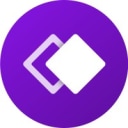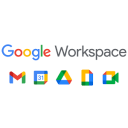Miro vs InVision: Which tool is best for UX/UI design?
- 01Miro vs InVision: overview
- 02What's the difference between Miro and InVision?
- 03Miro pros and cons
- 04InVision pros and cons
- 05Miro compared to InVision
- 06InVision compared to Miro
- 07Features comparison
- 08Miro vs InVision: Which is the best for your business?
- 09Promotions on Collaboration software
- 10Alternatives to Miro & InVision
Save up to $1,000 on Miro
Save up to $1,000 on Miro
If you're in the market for a collaborative design tool, you'll find no shortage of options. Miro and InVision are two of the top contenders, each offering robust features that cater to different aspects of design and team collaboration.
To aid you in selecting the ideal tool for your team, we delve into a detailed comparison of Miro vs InVision, examining their key features, distinct differences, and specific use cases. With this insight, you'll be better positioned to choose the platform that aligns with your business's needs, priorities, and goals. Continue reading to discover which tool can best enhance your team's productivity and creativity!
Miro vs InVision: overview
Miro and InVision are prominent players in the field of digital design collaboration platforms, each offering a unique set of features and functionalities tailored to enhance the design and collaborative process.
Miro excels as a visual collaboration tool that supports a wide range of creative processes, including brainstorming, planning, and design. Its expansive digital whiteboard space allows teams to visualize ideas and projects, facilitating seamless interaction through features such as sticky notes, drawing tools, and pre-built templates. In contrast, InVision specializes in providing an integrated environment for user interface design and prototyping. It offers a suite of tools designed to create interactive prototypes, enabling designers to quickly turn their visions into clickable prototypes and gather instant feedback from stakeholders.
Let’s delve deeper into the comparison between Miro and InVision to assist you in selecting the most suitable platform tailored to your specific design and collaboration needs.
What's the difference between Miro and InVision?
Miro and InVision are both powerful tools designed to facilitate collaboration and design, but they cater to slightly different aspects of the design process, appealing to diverse user needs. Understanding the distinctions between Miro and InVision is crucial for choosing the right tool for your team's specific requirements.
Miro is best known as a digital whiteboard that supports extensive collaborative options, making it ideal for brainstorming, strategic planning, and early-stage design thinking. It offers an expansive, flexible canvas where teams can work simultaneously, utilizing an array of tools such as sticky notes, drawing tools, and various integrative templates. Miro's strengths lie in its ability to foster collaboration among large teams and integrate seamlessly with numerous third-party applications, enhancing its utility as a central hub for project ideation and management.
In contrast, InVision is more focused on the later stages of the design process, particularly interface design and prototyping. It provides a robust set of features for creating high-fidelity interactive prototypes, which allow designers to simulate the user experience before any code is written. InVision's platform enables detailed feedback and iteration cycles, making it invaluable for refining user interfaces and enhancing user experiences. Its emphasis on design specificity and interactivity makes it a preferred choice for UX/UI designers seeking detailed, actionable feedback on their prototypes.
In terms of pricing, Miro and InVision also differ significantly. Miro offers a flexible pricing model that includes a free plan with basic features, suitable for small teams or individual professionals, and scalable paid options that expand functionality and user capacity, ideal for larger organizations. InVision, meanwhile, also starts with a free version but its paid tiers are structured to accommodate more intensive usage, focusing on additional features like advanced prototyping tools and enhanced collaboration features for larger design teams.
These differences highlight how Miro and InVision serve different phases of the design and collaboration process, each with unique strengths that cater to specific user needs and project types.
Miro pros and cons
What are the advantages of Miro?
- Visual collaboration: Miro provides a virtual whiteboard where team members can collaborate visually in real-time, making it easy to brainstorm ideas, organize thoughts, and work on projects together regardless of geographical location.
- Versatility: Miro offers a wide range of templates, tools, and features that support various types of visual collaboration, such as mind mapping, wireframing, agile planning, and design sprints, making it suitable for different types of projects and teams.
- Integration: It integrates with popular productivity and collaboration tools like Slack, Microsoft Teams, Google Drive, and Trello, allowing seamless workflow integration and easy access to files and data from other platforms.
- Accessibility: Miro is accessible from any device with an internet connection, including desktops, laptops, tablets, and smartphones, making it convenient for team members to collaborate from anywhere, at any time.
- Customization: Users can customize their boards with various shapes, sticky notes, text boxes, and images, enabling them to tailor the visual environment to suit their specific needs and preferences.
What are the disadvantages of Miro?
- Learning curve: While Miro is user-friendly, mastering its full range of features and capabilities may require some time and effort, especially for new users who are not familiar with online collaborative tools.
- Cost: While Miro offers a free plan with basic features, more advanced features and larger team sizes require a paid subscription, which may be a barrier for smaller teams or organizations with limited budgets.
- Performance issues: Some users have reported occasional performance issues, such as lagging or freezing, especially when working on complex boards with many elements or when collaborating with large teams.
- Security concerns: Like any online platform, there may be concerns about the security and privacy of data stored and shared on Miro, particularly for organizations dealing with sensitive or confidential information.
- Dependency on internet connection: Since Miro is a cloud-based platform, it requires a stable internet connection to access and use effectively. Offline functionality is limited, which can be a drawback in areas with poor connectivity or during internet outages.
Compare Miro to other tools
InVision pros and cons
What are the advantages of InVision?
- Prototyping: InVision offers powerful prototyping tools that allow designers to create interactive mockups and prototypes quickly and easily. This enables teams to visualize and test their designs before development, reducing the need for costly revisions later on.
- Collaboration: InVision facilitates collaboration among team members and stakeholders by providing features such as real-time commenting, version control, and live sharing. This streamlines the feedback and review process, leading to faster iteration and better outcomes.
- Integration: InVision integrates with popular design tools like Sketch, Adobe XD, and Figma, as well as with project management and communication tools like Slack and Jira. This seamless integration enables designers to work in their preferred tools while keeping all project assets and communication centralized within InVision.
- Design systems: InVision supports the creation and maintenance of design systems, allowing teams to establish consistent design patterns and reusable components across projects. This helps maintain brand consistency and improves efficiency by reducing redundant work.
- User testing: InVision enables designers to conduct user testing and gather feedback directly within prototypes using features like clickable hotspots and user recordings. This allows teams to validate design decisions and identify usability issues early in the design process.
What are the disadvantages of InVision?
- Learning curve: InVision has a relatively steep learning curve, especially for users who are new to prototyping or design collaboration tools. It may take time for team members to fully grasp all the features and functionalities available.
- Cost: While InVision offers a free plan with limited features, more advanced features such as unlimited prototypes, user testing, and design system management require a paid subscription. This may be a barrier for smaller teams or organizations with limited budgets.
- Performance issues: Some users have reported occasional performance issues with InVision, such as slow loading times or laggy interactions, particularly when working on large or complex prototypes.
- Limited design tools: While InVision provides robust prototyping and collaboration features, it lacks the comprehensive design capabilities of dedicated design tools like Sketch or Adobe XD. Users may need to use additional tools in conjunction with InVision to fulfill all their design needs.
- Dependency on internet connection: Since InVision is a cloud-based platform, it requires a stable internet connection to access and use effectively. Offline functionality is limited, which can be a drawback in areas with poor connectivity or during internet outages.
Compare InVision to other tools
Miro compared to InVision
Miro and InVision both serve as vital tools in the world of digital collaboration and design, albeit with distinct focuses. Miro excels in fostering real-time visual collaboration, offering a virtual whiteboard where teams ideate, organize, and brainstorm collectively. Its versatility in accommodating various visual collaboration needs and seamless integration with other tools makes it a favorite for agile teams.
In contrast, InVision specializes in design prototyping and iteration, empowering designers to create interactive mockups for user testing and feedback. Its emphasis on design fidelity and user experience optimization distinguishes it as a go-to platform for digital product design and development teams.
Is Miro better than InVision?
When comparing Miro and InVision, the choice largely depends on specific project requirements and team workflows. Miro is incredibly effective for teams looking for a dynamic, flexible environment to brainstorm and visualize ideas together in real time. Its broad toolset supports a range of functions from mapping out workflows to strategic planning, making it invaluable for multifaceted collaboration.
In contrast, InVision is tailored more towards the nuances of digital design, providing sophisticated tools for creating high-fidelity prototypes that closely simulate the final product. This makes InVision ideal for design-centric projects where precision and interactivity are key.
What is Miro best used for?
Miro is best used for fostering seamless visual collaboration among teams across diverse projects and disciplines. Its virtual whiteboard platform facilitates real-time brainstorming, ideation, and organization, allowing teams to generate and refine ideas collectively. Agile teams find Miro particularly beneficial for sprint planning, retrospectives, and backlog grooming. Additionally, it serves as a versatile tool for project management, design thinking workshops, and remote collaboration.
With its array of customizable templates, collaborative tools, and integrations, Miro empowers teams to unleash their creativity, streamline workflows, and achieve their objectives more effectively, regardless of geographical constraints or organizational boundaries.
Can Miro replace InVision?
While Miro and InVision serve overlapping purposes in digital collaboration, they cater to different aspects of the design and collaboration process. While Miro excels in real-time visual collaboration, brainstorming, and ideation through its virtual whiteboard platform, InVision specializes in design prototyping and iteration, offering interactive mockups for user testing and feedback. While Miro's collaborative features are robust, InVision's focus on design fidelity and user experience optimization remains unparalleled.
While Miro can complement InVision by enhancing collaboration during the early stages of the design process, it doesn't fully replace InVision's role in design prototyping and iteration.
Is Miro cheaper than InVision?
Determining whether Miro is cheaper than InVision depends on the specific needs and usage patterns of the team or organization. Miro offers a range of pricing plans, including a free tier with basic features and paid tiers with additional functionalities. InVision also provides various pricing options, with different plans tailored to the needs of individual designers, small teams, and larger enterprises.
While Miro's pricing may be more budget-friendly for teams primarily focused on collaboration and ideation, InVision's pricing structure may offer better value for teams requiring advanced design prototyping and iteration capabilities.
Is there a better Collaboration software than Miro?
When considering if there's a better software than Miro, it's essential to explore alternatives that may better align with your specific collaboration and visual ideation needs.
Several notable alternatives to Miro in the visual collaboration space include tools like Lucidspark, MURAL, Conceptboard, Stormboard, and Whimsical. Each platform offers unique features and capabilities, catering to different preferences and use cases. The decision on the right visual collaboration tool depends on factors such as your team's collaboration style, preferred interface, integration requirements, and budget constraints. While Miro excels in real-time collaboration and brainstorming, exploring other options may uncover a platform that better suits your team's specific collaboration goals and workflows.
$1,000 in credits (lifetime validity) on Miro
Get $1,000 in credits (lifetime validity) on Miro and up to $1,000 savings with Secret.
InVision compared to Miro
InVision and Miro stand as prominent players in the realm of digital collaboration, each with distinct strengths and applications. InVision excels in design prototyping and iteration, offering a platform tailored to the needs of designers seeking to create interactive mockups for user testing and feedback. Its focus on design fidelity and user experience optimization makes it indispensable in the digital product design process.
Conversely, Miro prioritizes real-time visual collaboration, providing a virtual whiteboard platform conducive to brainstorming, ideation, and agile planning. Its versatility and emphasis on collaboration make it an invaluable tool for teams across various projects and disciplines.
Is InVision better than Miro?
Deciding whether InVision is better than Miro hinges on the specific demands of a team's project and the intricacies of their workflow. InVision shines for teams that require high-fidelity prototyping capabilities. It serves as an essential resource for designers who need to construct detailed, interactive mockups that effectively mimic the user experience of a proposed digital product. This precision is crucial for iterative design processes where feedback is integrated continuously to refine a product.
While Miro facilitates broad collaborative efforts effectively, InVision's specialized tools make it particularly superior for teams whose primary focus is on refining design and enhancing user interaction.
What is InVision best used for?
InVision is best used for facilitating the design and iteration process of digital products and user interfaces. It serves as a powerful platform for creating interactive prototypes, allowing designers to visualize their ideas and gather feedback from stakeholders and users. InVision's focus on design fidelity and user experience optimization makes it indispensable for digital product design teams seeking to create intuitive and visually appealing interfaces.
Additionally, it streamlines collaboration among team members and stakeholders through features like real-time commenting, version control, and user testing. Overall, InVision empowers designers to iterate quickly, validate design decisions, and deliver exceptional user experiences.
Can InVision replace Miro?
Whether InVision can replace Miro depends on the specific needs and objectives of your team or organization. While InVision excels in design prototyping and iteration, offering robust tools for creating interactive mockups and gathering feedback, Miro focuses on real-time visual collaboration, providing a virtual whiteboard platform for ideation, brainstorming, and agile planning.
While InVision may complement Miro in the design process by enhancing prototyping capabilities, it may not fully replace Miro's role in fostering collaborative workflows across diverse projects and disciplines.
Is InVision cheaper than Miro?
Determining whether InVision is cheaper than Miro depends on factors such as the specific features and usage requirements of your team or organization.
InVision’s pricing plans include a free tier with limited features and paid tiers with additional functionalities tailored to individual designers, small teams, and larger enterprises. Similarly, Miro provides a range of pricing options, including a free plan with basic features and paid plans with advanced functionalities and larger team sizes.
Is there a better Design software than InVision?
When evaluating if there's a better software than InVision, it's essential to explore alternatives that may better suit your specific design prototyping and iteration needs.
Several notable alternatives to InVision in the design prototyping and iteration space include Figma, Adobe XD, Sketch, Uizard, and Axure. Each platform offers unique features and capabilities, catering to different preferences and use cases. The decision on the right design prototyping tool depends on factors such as your team's design workflow, collaboration requirements, preferred interface, and integration needs. While InVision excels in its focus on design fidelity and user experience optimization, exploring other options may uncover a platform that better aligns with your team's specific design prototyping goals and workflows.
Features comparison
Miro Outshines InVision in User-Friendliness and Collaborative Ease
When it comes to user experience and ease-of-use, Miro has a slight edge over InVision. WMiro's intuitive interface, coupled with its seamless drag-and-drop features, fosters effortless collaboration. For instance, its customizable templates streamline brainstorming sessions, while its real-time collaboration tools enhance team productivity.
In contrast, although InVision boasts a user-friendly interface, its extensive feature set may pose a learning curve for new users. Delving into complex design projects may require additional time for adaptation. Thus, for teams prioritizing simplicity and accessibility, Miro emerges as the preferred choice, offering a smoother and more intuitive collaborative experience.
Miro Surpasses InVision in Integration Diversity and Functionality
Diving into the world of integrations, both Miro and InVision offer extensive possibilities, empowering users to seamlessly connect their preferred tools and streamline workflows. Yet, delving deeper reveals Miro's superiority in both diversity and quality of integration options. For instance, Miro integrates effortlessly with popular project management platforms like Trello and Asana, facilitating smooth transition of tasks and collaboration.
Additionally, its integration with communication tools such as Slack ensures real-time communication within teams. In contrast, while InVision also offers a range of integrations, its options may be comparatively limited in scope and functionality. Thus, for teams seeking comprehensive integration solutions, Miro emerges as the preferred choice.
Miro Excels Over InVision in Providing Customizable and Adaptable Workspaces
Miro's customizable dashboard stands as a testament to its superior capability in creating adaptable workspaces that resonate directly with users' specific needs. For instance, Miro allows users to customize their dashboards with widgets, sticky notes, and visual elements tailored to their project requirements.
This level of personalization fosters a more immersive and productive work environment, facilitating seamless task organization and data sharing. In contrast, while InVision excels in streamlining project management processes, its interface may lack the same degree of customizable graphical representation, potentially limiting users' ability to create personalized workspaces tailored to their preferences. Thus, for teams seeking a highly tailored and adaptable workspace, Miro emerges as the preferred choice.
InVision Leads Miro in Streamlining Prototyping and Real-Time Feedback
InVision distinguishes itself by facilitating interactive prototyping and fostering real-time feedback directly within the platform. For example, designers can create interactive mockups and prototypes, allowing team members to provide feedback and suggestions seamlessly. This eliminates confusion and streamlines communication, saving time that would otherwise be spent on lengthy email chains.
In contrast, while Miro offers effective collaboration tools for brainstorming and ideation, it lacks the capability to provide direct feedback on prototype designs like InVision does. This notable advantage positions InVision as the preferred choice for teams seeking streamlined prototyping and feedback processes within a collaborative environment.
Miro Outperforms InVision with Superior Search Functionality for Enhanced Productivity
Miro's robust search function significantly enhances productivity by swiftly locating any board, object, tag, or person, a vital asset for multitasking across projects. For example, users can easily search for specific content within boards or find relevant collaborators, streamlining workflow efficiency.
In contrast, while InVision supports collaborative project management, its search functionality may not offer the same comprehensive capabilities as Miro. This discrepancy can potentially hinder users' ability to quickly locate and access relevant project assets or team members, highlighting Miro's advantage in providing a more efficient and seamless search experience.
Both Miro and InVision Excel in Enhancing Remote Collaboration Capabilities
Remote collaboration capabilities are equally impressive in both tools. Miro's core strength lies in its live collaboration tools, enabling users to work simultaneously on shared documents or tasks in real-time. For example, teams can brainstorm ideas, organize projects, and conduct agile planning sessions seamlessly, regardless of geographical locations.
Similarly, InVision provides a seamless interface for real-time project organization and collaborative brainstorming sessions. Both platforms excel in enhancing remote collaboration efforts, empowering teams to collaborate effectively and efficiently, even when working remotely or across different time zones.
InVision Excels Ahead of Miro in Advanced Animation and Interaction Capabilities
InVision emerges as the leader in animation capabilities, outclassing Miro with its range of advanced animation and interaction techniques. For instance, designers can leverage InVision's extensive toolkit to create dynamic and engaging user experiences, incorporating elements like hover effects and complex navigational menus seamlessly. These advanced animation features empower designers to bring their prototypes to life and create immersive user experiences.
In contrast, while Miro excels in efficient board customization and intelligent formatting, its animation capabilities may not match the depth and sophistication offered by InVision. Thus, for animation-focused projects, InVision stands as the preferred choice, offering unparalleled capabilities to create compelling interactive designs.
Subscribe to our newsletters.
No FOMO here. Stay up-to-date on all the latest deals and news with our monthly newsletter straight to your inbox like 118,000+ entrepreneurs (+ Get 10% off on on our Premium Membership!)
Miro vs InVision: Which is the best for your business?
Miro is the best tool for you if:
- Your team thrives on real-time collaboration and requires a versatile platform that facilitates brainstorming, mapping, and strategic planning seamlessly across disciplines.
- You value the ability to integrate with a wide range of other applications, enhancing workflow efficiency and ensuring that all tools work together smoothly.
- The nature of your projects demands a high level of visual interaction, where team members can see and edit work collectively, fostering a dynamic collaborative environment.
- You are looking for a tool that supports a variety of use cases from educational purposes to business strategy and everything in between, all on one board.
- You need a user-friendly interface that can be easily adopted by team members of varying technical skills, with minimal training required to start collaborating effectively.
InVision is the best tool for you if:
- Your focus is on creating high-fidelity prototypes that provide realistic user experience simulations, crucial for user testing and obtaining actionable feedback before development begins.
- You seek advanced tools specifically designed for detailed design work, allowing for precise adjustments and iterations to refine user interfaces and interactions to perfection.
- The integration of design and development processes is essential, with features that support seamless hand-offs from designers to developers, ensuring that design integrity is maintained.
- You require a platform that supports interactive tools for team collaboration, but with a stronger emphasis on design elements, making it ideal for product development teams.
- Your project demands a tool that not only facilitates design but also provides powerful presentation capabilities to showcase prototypes effectively to stakeholders for review and approval.
Alternatives to Miro & InVision
Promotions on Collaboration software
Start saving on the best SaaS with Secret.
Secret has already helped tens of thousands of startups save millions on the best SaaS like Miro, InVision & many more. Join Secret now to buy software the smart way.













